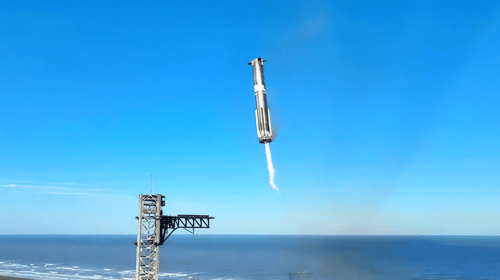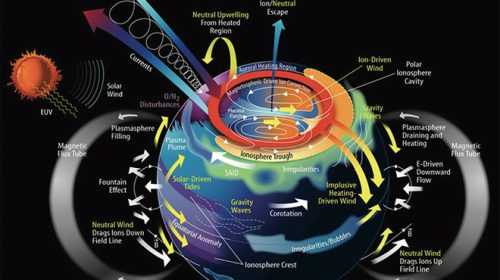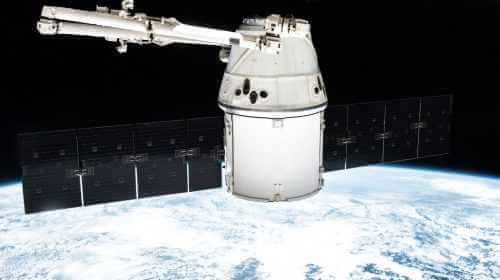Jan 19, 2019
Thomas Choi, the outspoken Co-Founder and former CEO of ABS Global, is a successful entrepreneur whose innovations have significantly expanded the contribution of satellite to the economies, societies and people of the developing world. He was a founder of Speedcast in 1999 and he founded ABS Global in 2005. Choi has been a vocal critic of NGSO (Non-Geostationary Satellite Orbit) solutions, pointing out several challenges for new MEO (Medium Earth Orbit) and LEO (Low Earth Orbit) satellite constellations being developed to provide broadband services to consumers. Among these are the difficulties for new constellation operators to obtain regulatory approval for the use of the frequencies required to deliver satellite services. In some cases, countries will want to use those frequencies for their own constellations, and for others, it means tying up frequencies that the countries might prefer to use for terrestrial services such as 5G. O3b’s denial of frequency approval by Russia is an example of what he predicted. So, what does Choi see as the solution for underserved areas if NGSO satellite is not the answer?
 Source: Linkedin
Source: Linkedin
It’s All About the Power
Noting that while satellite growth has been significant over the last 25 years, growing from $4 billion to $12 billion, the mobile industry grew from $200 million in revenue to $1 trillion per year. Wanting to be part of the larger market, Choi left ABS and founded Airspace IX (Internet Exchange) Limited, a company dedicated to providing the world’s most power efficient wireless system. If you ask Choi why over 3 billion people still lack access to broadband internet services, he will start talking about power. Developed countries have access to fiber and cables, but in developing countries, wireless radio networks are the primary solution for internet access. These systems, such as 4G/LTE are huge power hogs, and generate a great deal of heat that calls for air conditioning, thus requiring even more power. Power costs are not unreasonable in developed nations, but in the emerging markets it can be unreliable, and very expensive – if it is available at all.
The installations for cellular towers in emerging nations, usually require a walled compound, and security personnel to prevent solar panels, generators, fuel and other hardware from walking away. As population density goes down, it becomes more and more of a challenge for mobile operators. Choi says the lack of inexpensive and reliable power is a fundamental problem that must be solved before focusing on the cost of each delivered bit provided by the wireless hardware. Airspace IX designed “Curvalux” to dramatically reduce the need for expensive power.
Curvalux leverages a multi-beam phased array antenna that provides very high gain and directivity, while using very little power. The Curvalux Edge Nodes reach out to 15 km, while consuming only 140 W of power. Curvalux Edge Node Lite, is designed for rural areas and only uses 43 W of power to provide 2 Gbps of broadband internet service, up to 2 km away. It is designed for low cost customer premise equipment and smart phones. The Curvalux solution is claimed to consume 1/100th of the electrical power, as compared with LTE, and delivers 7 times more throughput. The units do not generate heat; thus, no air conditioning is required, even in hot tropical regions. A 100 W solar panel kit (panels, battery, inverter) purchased on the web for $200 can power a Curvalux system around the clock and has thus removed the power barrier which has held up the expansion of broadband internet.
Bending Light?
Choi told “Via Satellite” on August 13, 2018 in an article predicting the death of HTS (High Throughput Satellite) delivered by the LEO and MEO satellites mentioned above, that “the patent pending Curvalux system can easily cover users that are hundreds of kilometers away from the main fiber connection, and they don’t require a direct line of sight to the primary tower. We can serve customers that are shaded by mountains, buildings, and other obstacles by bending the radio signals in free space using our system.” “Bending radio signals in free space…” Those are words that make one sit up and take notice, as it is akin to bending light – a technology that is being explored for invisibility cloaking.
Curvalux, whose name is based on the Latin words for “bend” and “light” leverages phased array technology that claims to deliver amazing bandwidth efficiency and delivery of services over a given area. The patent pending system claims that it will cover users hundreds of kilometers away from main fiber connections without requiring a direct line of sight to a primary tower.
Distribution Efficiencies
Curvalux claims an ability to deliver 100s of Gbps within a square kilometer and do so at a much lower cost than either wireless or satellite broadband technologies. Choi suggests the anticipated capital expenditure per Gbps will be lower than $5000, as compared with the HTS NGSO satellites targeting $1 million per Gbps. This two-orders-of-magnitude improvement in costs, will require a $30 fixed wireless terminal, as compared with $300 for consumer class broadband satellite terminals. He anticipates that they will be one-order-of-magnitude less expensive than the new 5G technology provided by large companies such as Samsung, Huawei, and others.

Airspace IX’s technology does this by providing a new solution for how spectrum can be reused. LTE networks are cellular point to multipoint networks. When an operator runs out of capacity, they must expand the number of towers by a factor of eight in a given geographical area, to double the broadband density, or total wireless capacity per square kilometer. This is necessary to avoid frequency interference, as one must avoid using the same spectrum or polarization over the same area. This is not an efficient way to expand, therefore, to add the capacity, additional frequencies are required. Currently mobile network operators are going after satellite frequencies, such as C band, to manage the growing need for more capacity. Without providing full details, Choi claims to have a better way of managing frequency reuse, which he claims may help alleviate the ongoing attack on satellite frequencies by mobile operators.
The Market
Existing technology providers make their money by selling new hardware, pushing for new standards that allow them to refresh the hardware every four years or so. Airspace IX’s model is to take a small percentage of the recurring revenue arising from the use of their technology. Airspace IX plans to target countries that have large untapped markets such as India, and even the US, and then move on to developing countries in Central and Southeast Asia, Africa and South America. Airspace IX is working with the Federal Communications Commission (FCC) in the US for qualification testing and has expressed confidence at receiving approvals for the technology. Curvalux will provide a solution for end users, via fixed CPE or smartphones. It will also provide a backhaul to fiber at prices unheard of for microwave, fiber or satellite, proposing that their solution will make the cost per Mbps for backbone access drop below 5 cents per Mbps! Mobile network operators, they suggest, will embrace their solution or face stiff competition.

Impact on Satellite
Choi has long predicted that 5G would deliver a death blow to the NGSO HTS consumer broadband business plan. He sees increased competition from LTE, along with 5G, which should be faster and more affordable than HTS. Given that Curvalux was designed to blow away the cost structure for 5G fixed wireless, it will certainly cost less and deliver more than LTE. He sees HTS as continuing to offer backbone access to remote areas that fiber does not reach but suggests that it will not prevail in providing last mile service for consumer broadband. Indeed, he sees Curvalux becoming a large customer for backhaul capacity from HTS satellites, but only in markets that are more than 100 km away from fiber.
Satellites will continue to play a very strong role in video distribution, mission-critical applications, and enterprise class broadband. There will always be areas that fixed wireless will not reach and both GEO and NGSO satellites will continue to play a role, but not in the consumer market – which is what many of the NGSO operators are said to be targeting. Satellite will continue to offer backhaul services where terrestrial alternatives are not available. However, companies that bet too heavily on consumer broadband may be doomed, as 4G, 5G and now Curvalux are simply better, faster, and cost less.
So, how do they “bend light?” Choi isn’t saying but apparently it is possible…
 Kaminer et al. showed that shape-preserving beams of light that travel along a circular trajectory emerge as solutions to Maxwell’s equations. (Left) Calculated propagation of a self-bending beam. This solution assumes the wave’s electric field is polarized in the transverse direction (TE polarization). (Right) Illustration of a nondiffracting beam bending around an obstacle. (Zhigang Chen, Department of Physics and Astronomy, San Francisco State University, San Francisco, CA 94132, USA April 16, 2012• Physics 5, 44)
Kaminer et al. showed that shape-preserving beams of light that travel along a circular trajectory emerge as solutions to Maxwell’s equations. (Left) Calculated propagation of a self-bending beam. This solution assumes the wave’s electric field is polarized in the transverse direction (TE polarization). (Right) Illustration of a nondiffracting beam bending around an obstacle. (Zhigang Chen, Department of Physics and Astronomy, San Francisco State University, San Francisco, CA 94132, USA April 16, 2012• Physics 5, 44)
What are the implications of this new technology to the Intelsat/SES proposal to reallocate C band spectrum over the US for 5G networks? https://www.bcsatellite.net/blog/is-us-c-band-capacity-packing-its-bags-for-mobile-land We shall see…





